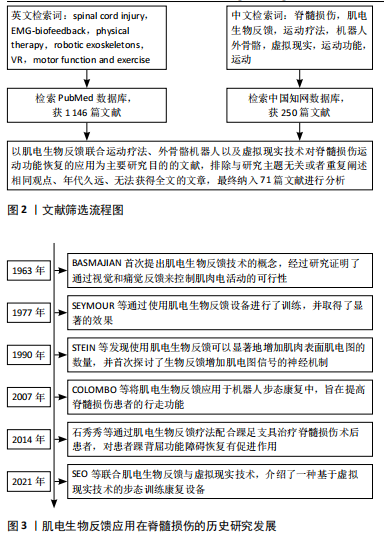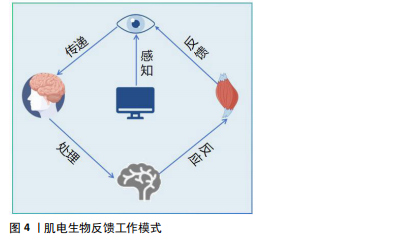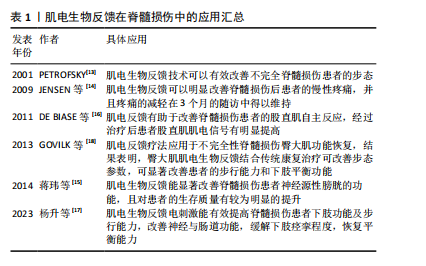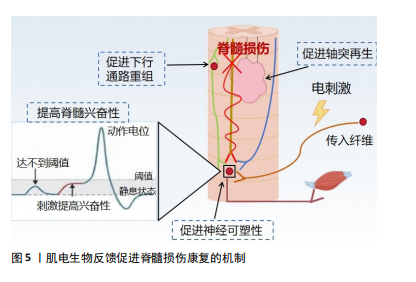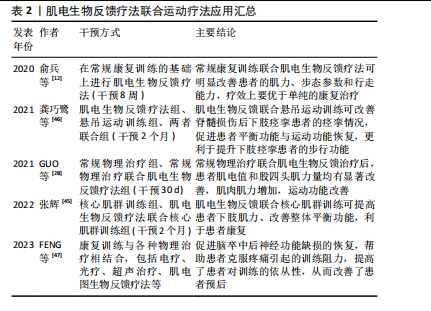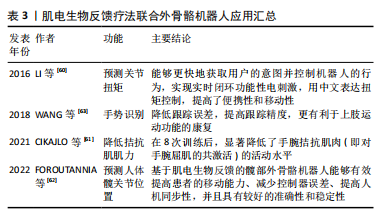[1] ACKERY A, TATOR C, KRASSIOUKOV A. A global perspective on spinal cord injury epidemiology. J Neurotrauma. 2004;21(10):1355-1370.
[2] ARORA M, CRAIG AR. Spinal Cord Injuries: Advances in Rehabilitation. J Clin Med. 2024;13(6):1782.
[3] THOMAS A, TOWNSEND O, EVANS N. Spinal cord injury–basic principles and management. Surgery (Oxford). 2024;46(6):443-450.
[4] DE ALMEIDA FM, MARQUES SA, DOS SANTOS ACR, et al. Molecular approaches for spinal cord injury treatment. Neural Regen Res. 2023; 18(1):23-30.
[5] COVELL MM, NAIK A, SHAFFER A, et al. Social determinants of health impact spinal cord injury outcomes in low-and middle-income countries: a meta-epidemiological study. Neurosurgery. 2024;94(5):893-902.
[6] KETCHUM JM, CUTHBERT JP, DEUTSCH A, et al. Representativeness of the spinal cord injury model systems national database. Spinal Cord. 2018.56(2):126-132.
[7] BAROUDI M, REZK A, DAHER M, et al. Management of traumatic spinal cord injury: A current concepts review of contemporary and future treatment. Injury. 2024;55(6):111472.
[8] SIMIĆ M, STOJANOVIĆ GM. Wearable Device for Personalized EMG Feedback-based Treatments. Results Eng. 2024;23:102472.
[9] CINNERA AM, MORONE G, BISIRRI A, et al. Headaches treatment with EMG biofeedback: a focused systematic review and meta-analysis. Eur J Phys Rehabil Med. 2023;59(6):697.
[10] 杨菊贤,杜勤.生物反馈治疗在心身疾病的应用[J].中国行为医学科学,2004,13(1):122-124.
[11] 马利娜,方力争.肌电生物反馈技术在脑卒中领域的应用进展[J].全科医学临床与教育,2018,16(4):417-420.
[12] 俞兵,周涛,吴健,等.肌电生物反馈联合康复训练对不完全性脊髓损伤下肢肌力及步态的影响[J].临床骨科杂志,2020,23(5):618-621.
[13] PETROFSKY J. The use of electromyogram biofeedback to reduce Trendelenburg gait. Eur J Appl Physiol. 2001;85:491-495.
[14] JENSEN MP, BARBER J, ROMANO JM, et al. Effects of self-hypnosis training and EMG biofeedback relaxation training on chronic pain in persons with spinal-cord injury. Int J Clin Exp Hypn. 2009;57(3):239-268.
[15] 蒋玮,张茂舒,谭波涛,等.盆底肌生物反馈电刺激对脊髓损伤后神经源性膀胱功能恢复的临床研究[J].第三军医大学学报,2014, 36(16):1725-1728.
[16] DE BIASE MEM, POLITTI F, PALOMARI ET, et al. Increased EMG response following electromyographic biofeedback treatment of rectus femoris muscle after spinal cord injury. Physiotherapy. 2011;97(2):175-179.
[17] 杨升,吴博中.肌电生物反馈电刺激改善脊髓损伤患者下肢功能及步行能力的研究[J].现代医学与健康研究电子杂志,2023,7(24):48-51.
[18] GOVIL K, NOOHU MM. Effect of EMG biofeedback training of gluteus maximus muscle on gait parameters in incomplete spinal cord injury. NeuroRehabilitation. 2013;33(1):147-152.
[19] 吴豫昌,李天禹,张明秀.生物反馈治疗技术在临床应用中的研究进展[J].齐齐哈尔医学院学报,2022,43(17):1668-1673.
[20] KARABORKLU ARGUT S, CELIK D, YASACı Z. Effectiveness of therapeutic electromyographic biofeedback after orthopedic knee surgeries: a systematic review. Disabil Rehabil. 2022;44(14):3364-3372.
[21] ALBUQUERQUE LCA, PERNAMBUCO L, DA SILVA CM, et al. Effects of electromyographic biofeedback as an adjunctive therapy in the treatment of swallowing disorders: a systematic review of the literature. Eur Arch Otorhinolaryngol. 2019;276:927-938.
[22] BASMAJIAN JV. Control and training of individual motor units. Science. 1963;141(3579):440-441.
[23] SEYMOUR RJ, BASSLER CR. Electromyographic biofeedback in the treatment of incomplete paraplegia. Phys Ther. 1977;57(10):1148-1150.
[24] STEIN RB, BRUCKER BS, AYYAR DR. Motor units in incomplete spinal cord injury: electrical activity, contractile properties and the effects of biofeedback. J Neurol Neurosurg Psychiatry. 1990;53(10):880-885.
[25] LÜNENBURGER L, COLOMBO G, RIENER R. Biofeedback for robotic gait rehabilitation. J Neuroeng Rehabil. 2007;4:1.
[26] 石秀秀,唐金树,秦江,等.肌电生物反馈疗法配合踝足支具治疗脊髓损伤患者术后踝背屈功能障碍的疗效[J].中国骨与关节杂志, 2014,3(9):661-664.
[27] SEO JW, KIM DH, JUNG J, et al. Development of Immersive VR Device for Gait Training Rehabilitation with Biofeedback System-Preliminary Study. Appl Sci. 2021;11(21):10394.
[28] GUO Y, GAO F, LI J, et al. Effect of electromyographic biofeedback training on motor function of quadriceps femoris in patients with incomplete spinal cord injury: A randomized controlled trial. NeuroRehabilitation. 2021;48(3):345-351.
[29] JARA JS, AGGER S, HOLLIS ER. Functional electrical stimulation and the modulation of the axon regeneration program. Front Cell Dev Biol. 2020;8:736.
[30] ZHANG H, LIU Y, ZHOU K, et al. Restoring sensorimotor function through neuromodulation after spinal cord injury: progress and remaining challenges. Front Neurosci. 2021;15:749465.
[31] INANICI F, BRIGHTON LN, SAMEJIMA S, et al. Transcutaneous spinal cord stimulation restores hand and arm function after spinal cord injury. IEEE Trans Neural Syst Rehabil Eng. 2021;29:310-319.
[32] MORITZ C, FIELD-FOTE EC, TEFERTILLER C, et al. Non-invasive spinal cord electrical stimulation for arm and hand function in chronic tetraplegia: a safety and efficacy trial. Nat Med. 2024;30(5):1276-1283.
[33] JACK AS, HURD C, MARTIN J, et al. Electrical stimulation as a tool to promote plasticity of the injured spinal cord. J Neurotrauma. 2020; 37(18):1933-1953.
[34] DORRIAN RM, BERRYMAN CF, LAUTO A, et al. Electrical stimulation for the treatment of spinal cord injuries: A review of the cellular and molecular mechanisms that drive functional improvements. Front Cell Neurosci. 2023;17:1095259.
[35] ARMAGAN O, TASCIOGLU F. Electromyographic biofeedback in the treatment of the hemiplegic hand: a placebo-controlled study. Am J Phys Med Rehabil. 2003;82(11):856-861.
[36] 吴豫昌,李天禹,张明秀.生物反馈治疗技术在临床应用中的研究进展[J].齐齐哈尔医学院学报,2022,43(17):1668-1673.
[37] 张梦月,冯加彬,张蕊,等.肌电生物反馈结合肌内效贴治疗脑卒中偏瘫患者肩关节半脱位的研究进展[J].按摩与康复医学,2019, 10(2):48-49.
[38] PHUPHANICH ME, DROESSLER J, ALTMAN L, et al. Movement-based therapies in rehabilitation. Phys Med Rehabil Clin N Am. 2020;31(4): 577-591.
[39] BILCHAK JN, CARON G, COTE MP. Exercise-Induced Plasticity in Signaling Pathways Involved in Motor Recovery after Spinal Cord Injury. Int J Mol Sci. 2021;22(9):48-58.
[40] LIU K, TRONSTAD O, FLAWS D, et al. From bedside to recovery: exercise therapy for prevention of post-intensive care syndrome. J Intensive Care. 2024;12(1):11.
[41] KISSANE RWP, WRIGHT O, AL’JOBOORI YD, et al. Effects of treadmill training on microvascular remodeling in the rat after spinal cord injury. Muscle Nerve. 2019;59(3):370-379.
[42] VIVODTZEV I, TAYLOR JA. Cardiac, autonomic, and cardiometabolic impact of exercise training in spinal cord injury: a qualitative review. J Cardiopulm Rehabil Prev. 2021;41:6-12.
[43] NANDAKUMAR B, BLUMENTHAL GH, DISSE GD, et al. Exercise therapy guides cortical reorganization after midthoracic spinal contusion to enhance control of lower thoracic muscles, supporting functional recovery. Exp Neurol. 2023;364:114394.
[44] WINCEK A, HUBER J, LESZCZYNSKA K, et al. Results of a long-term uniform system of neurorehabilitation in patients with incomplete thoracic spinal cord injury. Ann Agric Environ Med. 2022;29(1):94-102.
[45] 张辉.肌电生物反馈疗法联合核心肌群训练在不完全性脊髓损伤患者康复中的应用[J].黑龙江医学,2022,46(4):471-473.
[46] 龚巧鹭,张建梅.肌电生物反馈及悬吊运动训练对脊髓损伤后下肢痉挛患者步行功能的影响[J].中国医药导报,2021,18(2):110-113.
[47] FENG S, TANG M, HUANG G, et al. EMG biofeedback combined with rehabilitation training may be the best physical therapy for improving upper limb motor function and relieving pain in patients with the post-stroke shoulder-hand syndrome: a Bayesian network meta-analysis. Front Neurol. 2023;13:1056156.
[48] CHU X, LIU S, ZHAO X, et al. Case report: Virtual reality-based arm and leg cycling combined with transcutaneous electrical spinal cord stimulation for early treatment of a cervical spinal cord injured patient. Front Neurosci. 2024;18:1380467.
[49] HE Y, XU Y, HAI M, et al. Exoskeleton-assisted rehabilitation and neuroplasticity in spinal cord injury. World Neurosurg. 2024;185:45-54.
[50] RODRIGUEZ TAPIA G, DOUMAS I, LEJEUNE T, et al. Wearable powered exoskeletons for gait training in tetraplegia: a systematic review on feasibility, safety and potential health benefits. Acta Neurol Belg. 2022; 122(5):1149-1162
[51] LOUIE DR, ENG JJ. Powered robotic exoskeletons in post-stroke rehabilitation of gait: a scoping review. J Neuroeng Rehabil. 2016;13:1-10.
[52] CONTRERAS-VIDAL JL, BHAGAT NA, BRANTLEY J, et al. Powered exoskeletons for bipedal locomotion after spinal cord injury. J Neural Eng. 2016;13(3):031001.
[53] HU X, LU J, WANG Y, et al. Effects of a lower limb walking exoskeleton on quality of life and activities of daily living in patients with complete spinal cord injury: A randomized controlled trial. Technol Health Care. 2023;32(1):243-253.
[54] 张立新,白定群,白玉龙,等.下肢康复机器人临床应用专家共识[J].康复学报,2023,33(5):383-396.
[55] ALMUTAIRI S, SWANK C, WANG-PRICE S, et al. Walking with and without a robotic exoskeleton in people with incomplete spinal cord injury compared to a typical gait pattern. NeuroRehabilitation. 2021;49(4):585-596.
[56] ALCOBENDAS-MAESTRO M, ESCLARÍN-RUZ A, CASADO-LÓPEZ RM, et al. Lokomat robotic-assisted versus overground training within 3 to 6 months of incomplete spinal cord lesion: randomized controlled trial. Neurorehabil Neural Repair. 2012;26(9):1058-1063.
[57] ALASHRAM AR, ANNINO G, PADUA E. Robot-assisted gait training in individuals with spinal cord injury: A systematic review for the clinical effectiveness of Lokomat. J Clin Neurosci. 2021;91:260-269.
[58] KAO PC, LEWIS CL, FERRIS DP. Invariant ankle moment patterns when walking with and without a robotic ankle exoskeleton. J Biomech. 2010;43(2):203-209.
[59] LENZI T, DE ROSSI SMM, VITIELLO N, et al. Intention-based EMG control for powered exoskeletons. IEEE Trans Biomed Eng. 2012;59(8):2180-2190.
[60] LI Z, GUIRAUD D, ANDREU D, et al. Real-time estimation of FES-induced joint torque with evoked EMG: Application to spinal cord injured patients. J Neuroeng Rehabil. 2016;13(1):1-11.
[61] CIKAJLO I, ZADRAVEC M, MATJACIC Z, et al. High-density electromyography biofeedback during robotic wrist exercises for reducing co-activation of antagonist muscles: a case report. Int J Rehabil Res. 2021;44(1):92-97.
[62] FOROUTANNIA A, AKBARZADEH-T MR, AKBARZADEH A. A deep learning strategy for EMG-based joint position prediction in hip exoskeleton assistive robots. Biomed Signal Proces. 2022;75:103557.
[63] WANG P, WANG Y, HUANG H, et al. The use of a cascaded Kinect and electromyography gesture decoding algorithm in an initial robot-aided hand neurorehabilitation. Adv Mech Eng. 2018;10(1): 1687814017751967.
[64] LEEMHUIS E, ESPOSITO RM, DE GENNARO L, et al. Go Virtual to Get Real: Virtual Reality as a Resource for Spinal Cord Treatment. Int J Environ Res Public Health. 2021;18(4):1819.
[65] DE MIGUEL-RUBIO A, MUÑOZ-PÉREZ L, ALBA-RUEDA A, et al. A Therapeutic Approach Using the Combined Application of Virtual Reality with Robotics for the Treatment of Patients with Spinal Cord Injury: A Systematic Review. Int J Environ Res Public Health. 2022; 19(14):8772.
[66] AZURDIA D, ACUÑA SM, NARASAKI-JARA M, et al. Effects of virtual reality-based aerobic exercise on perceptions of pain and fatigue in individuals with spinal cord injury. Games Health J. 2022;11(4):236-241.
[67] AN Y, PARK C. The effects of virtual soccer game on balance, gait function, and kick speed in chronic incomplete spinal cord injury: a randomized controlled trial. Spinal Cord. 2022;60(6):504-509.
[68] TRAN Y, AUSTIN P, LO C, et al. An exploratory EEG analysis on the effects of virtual reality in people with neuropathic pain following spinal cord injury. Sensors. 2022;22(7):2629.
[69] XIAO Y, BAI H, GAO Y, et al. Interactive Virtual Ankle Movement Controlled by Wrist sEMG Improves Motor Imagery: An Exploratory Study. IEEE Trans Vis Comput Graph. 2024;30(8):5507-5524.
[70] LIN M, HUANG J, FU J, et al. A VR-based motor imagery training system with EMG-based real-time feedback for post-stroke rehabilitation. IEEE Trans Neural Syst Rehabil Eng. 2022;31:1-10.
[71] 胡凤丹,蔡华安,胡德,等.表面肌电在临床康复中的应用进展[J].赣南医学院学报,2021,41(7):740-744.
|
